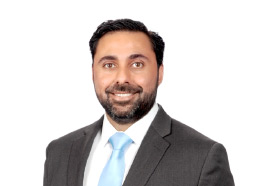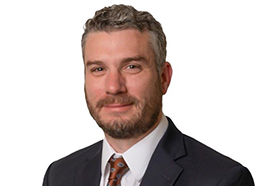Today’s business often transcends geographic borders, creating complexity around how profits are taxed, and which jurisdictions should be entitled to collect those taxes.
In the past, some entities have shifted their profits to low-tax jurisdictions. That’s why an international group worked to establish a coordinated global tax framework. In 2021, the 137 member jurisdictions under the OECD’s Inclusive Framework agreed to a two-pillar solution to combat low-taxed income and harmful profit shifting. Key elements of Pillar 2, which target low-taxed income, are taking effect across many jurisdictions beginning in Jan. 1, 2024. U.S. manufacturers need to be ready.
Pillar 2 seeks to tax all global income at a 15% minimum corporate tax rate. This can have significant implications for multinationals with revenues exceeding €750 million in two of the last four fiscal years, if they have pockets of low-taxed earnings.
The OECD has published several resources for businesses, including rules, commentary, administrative guidance, information returns, an implementation handbook, background materials and examples. More guidance is expected as implementation continues.
Manufacturers need to understand some key details about Pillar 2, if they have global supply chains, customers or other transactions.
Calculate a 15% minimum tax
To achieve its objective, Pillar 2 prescribes a series of interlocking rules meant to ensure that “income” is taxed at a minimum 15% effective rate. Under the OECD plan, the GloBE rules determine the base of income. GloBE income is generally an adjusted measure of financial statement income. The amount of taxes available to meet the 15% threshold is defined under OECD model rules and certain tax credits may not “count” when determining effective rates. The 15% rate applies on a jurisdiction-by-jurisdiction basis, negating the ability for blending across high- and low-tax jurisdictions.
The OECD does not have legislative authority to enact Pillar 2 in any jurisdiction, so implementation will be uneven and complex. Each participating country has or will adopt its own version of Pillar 2 but, some differences in final laws and application will inevitably arise. The concepts presented in this article are based on the OECD’s model rules and administrative guidance, but actual final local country laws may vary and should be closely monitored throughout the adoption period.

“This gives the entity’s home jurisdiction, which might have been a low-tax jurisdiction, a strong incentive to top up taxes to 15%.”
As a result of the Pillar 2 project, many jurisdictions have chosen to adopt a Qualified Minimum Top-Up Tax (QDMTT). The QDMTT essentially allows the adopting jurisdiction to collect a "top-up” tax on the adopting jurisdiction’s domestic entities, preventing any other jurisdiction from imposing Pillar 2 taxes on that same income. QDMTTs vary, but generally are designed to impose tax to ensure a minimum effective rate of 15% applies on all domestic income. Under OECD administrative guidance, entities subject to a QDMTT in their jurisdiction may enjoy a safe harbor from other Pillar 2 taxes. “This gives the entity’s home jurisdiction, which might have been a low-tax jurisdiction, a strong incentive to top up taxes to 15%,” noted Grant Thornton International Tax Services Partner Christopher Summer.
Controlled Foreign Corporation (CFC) tax regimes (US GILTI and Subpart F rules) will generally still apply, meaning the controlling shareholder’s taxing jurisdiction may seek to tax certain types of income derived through CFCs. Generally, taxes imposed under a QDMTT regime are thought to be creditable for purposes of CFC taxation. Guidance in the US supports this approach.
As a backstop to ensure remaining pockets of low-taxed income are taxed, the Pillar 2 rules include the IIR and UTPR. The IIR imposes a top-up tax on the ultimate parent entity based on the earnings of its foreign subsidiaries. The UTPR extends this concept one step further, by allowing brother-sister jurisdictions to impose taxation if low-tax income exists within a group, even after the IIR rule is applied.
The result is an intricate and complex set of interlocking rules designed to target low-taxed income and ensure a 15% minimum rate is achieved. Consider a hypothetical low-tax jurisdiction with a 10% statutory rate. In a simple example, one of the top-up taxes would add an additional 5%. Applying the rules and determining who collects that tax, and how it impacts tax determinations in other places, is a much broader challenge for companies reacting to these rules.
Transfer pricing and other complications
While Pillar 2 advances a broad objective within a clear framework, many issues arise when you examine the specifics of implementation, such as transfer pricing.

“Think about manufacturers that operate in a global manner … Are you following a consistent policy, from a transfer pricing perspective, that will help you understand the potential impact?”
“Think about manufacturers that operate in a global manner,” offered Grant Thornton Transfer Pricing Principal Samit Shah. “Supply chains are integrated. You may have contract R&D somewhere. You may have contract service providers. You may have limited-risk distributors and contract manufacturers. Are you following a consistent policy, from a transfer pricing perspective, that will help you understand the potential impact?”
For example, are all of your contractors and entities earning cost plus 10%? Are all of your limited-risk distributors earning a 5% EBIT margin? If these are not consistent, that could cause some variation — and that variation could complicate your Pillar 2 calculations.
Safe Harbors
As you might expect, compliance with Pillar 2 demands a great deal of data from multiple stakeholders. In response to this anticipated burden, the OECD has created some safe harbors to reduce compliance burdens. The two most important are the Transitional Country-by-Country Reporting Safe Harbor (CbCR) and the Simplified Calculations Safe Harbor.
The CbCR Safe Harbor is significant but temporary, expiring in 2028. Still, it can provide valuable relief while you orchestrate your Pillar 2 implementation.

“While this is an informational filing, it needs to be treated as an official filing. It needs that level of attention and governance.”
Of course, CbCR reporting has its own demands. “While this is an informational filing, it needs to be treated as an official filing,” said Grant Thornton International Tax Solutions Partner Brandon Joseph. “It needs that level of attention and governance.” That means rigorous and thorough reporting. Eligibility is determined by qualified financial statement reporting which, in this case, is the consolidated reporting reflected in the UPE financial statements. Some reporting from constituent entities is often excluded from such statements. This is permitted, if they follow acceptable financial accounting standards.
Entities can qualify under one of three exemptions. “Since you cannot claim an exemption once you have been denied it, it’s smart to pursue as many as possible, as soon as possible,” Joseph said.
Three ways to achieve the CbCR Safe Harbor
- De minimis: This looks directly at revenue as reported on a jurisdictional basis. The threshold is €10 million of revenue and €1 million of profit before income tax.
- ETR: The ETR test focuses on the ratio of the tax expense recorded on the qualifying financial statements to the pre-tax book income or loss. If it’s above 15% for fiscal years beginning in 2023 or 2024, the exemption applies. That 15% number escalates every year.
- Routine profits: If the income is below the substance-based income exclusion amounts of 8% of fixed asset net book value and 10% of payroll, the exemption applies.
While it does not require country-by-country reporting, the Simplified Calculation Safe Harbor uses similar tests, with similar calculations. There are also a few noteworthy differences. The de minimis test looks at an average qualifying revenue. The ETR test threshold of 15% is fixed, not escalating.
There are two other safe harbors that should be mentioned. The Transitional UTPR Safe Harbor, which offers an out when the UPE jurisdiction has a corporate tax rate of at least 20%, is limited by its short window. It only applies to fiscal years that begin on or before Dec. 31, 2025, and end on or before Dec. 31, 2026. The QDMTT Safe Harbor provides that jurisdictions that meet certain requirements are deemed to have a top-up tax rate of zero.
Reporting that dives into a data lake
The OECD has released a very thorough, three-section, twenty-page template of the GLoBE information return. It deals with the key ratio of GLoBE income to covered taxes, in detail. There are twenty-six adjustments specified for GloBE. This includes everything from pulling out dividends to currency pricing to inter-company transfer assets. The covered taxes portion specifies 19 adjustments.
There are provisions for both MNE and Constituent Entity level information, but filers are permitted to report at a consolidated level through 2028. That said, they should be prepared to break out the constituent-level data which informed the Multinational Entity reporting.
Reporting must be done within 18 months after the last day of the first fiscal year impacted by Pillar 2. For most calendar-year filers, that’s June 2026 for the 2024 enactment.
When you think of all the data and data sources you need, a data lake can create multiple efficiencies. It can help you eliminate redundancies and gaps in the collection process, simplify access and use data for multiple purposes. While this requires some initial work and buy-in from IT, it’s a powerful long-term tool.
Pillar 2 was once just a vision on the horizon, but it is now becoming a reality. The reality will be challenging, but it doesn’t have to be mystifying. Manufacturers can use proper planning to meet these considerable demands.
Contacts:



Samit Shah
Principal, Transfer Pricing Practice
Grant Thornton Advisors LLC
Samit serves as a Principal of the Firm’s Transfer Pricing Practice based in the Atlanta, Georgia.
Atlanta, Georgia
Industries
- Life sciences
- Manufacturing, Transportation & Distribution
- Technology, media & telecommunications
Service Experience
- Tax
Our manufacturing featured industry insights

No Results Found. Please search again using different keywords and/or filters.



